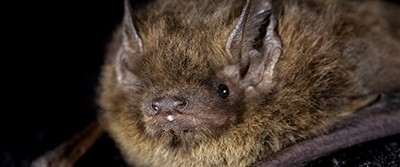Dublin Teens Build Bat Detector

By Rita Waimer
Bats have a bad reputation and are often thought of as creepy creatures of the night, but the truth is that they’re an important part of the ecosystem. Most eat fruit or insects, and they help pollinate flowers and spread seeds. While they pose little risk to humans, their nocturnal schedule prevents us from learning more about them. And in fact, they’re probably more common in your area than you realize.
Bats in the Attic
The Bagnall family in Dublin, Ireland, learned just that when they heard noises in their attic. At first, they thought rats had gotten in, but the exterminator discovered 700 bats. The animals are protected, so there was little that the family could do to remove them. Instead of forcing them out, Dylan, the 17-year-old son in the family, chose to learn more about them.
Nine species of bats are native to Ireland, so Dylan wanted to learn which ones were now calling his attic home. To get started, he and his friend Richard went on bat walks with local bat groups. The two also got a bat detector, which converts ultrasonic bat sounds that are too high pitched for humans to hear to an audible frequency.
But Dylan and Richard were disappointed that their bat detector couldn’t save bat calls or display them as a graph — two things that could help identify the bats. More advanced bat detectors are expensive, so they decided to make a detector of their own.
Creating a Bat Detector
The detector they built is based on a Raspberry Pi, a small, modular, single-board computer designed to promote teaching computer science and commonly used in a variety of projects. They added a microphone from a smartphone, then configured everything to make it record bat calls, play them back in a form that humans can hear, and display them as a graph. And they did it for less than the cost of many standard bat detectors: only $137.
While the detector was helpful, audio alone wasn’t enough to identify the bats because some species have similar calls. To round out their test, the teens collected guano — bat poop — from the attic and developed a simple DNA test. They determined that three types of bats were living in the attic: Lisler’s bats, common pipistrelles, and soprano pipistrelles. Because those three species don’t compete for food, they can easily live together in harmony.
Dylan and Richard even decided to enter their bat detector into the Intel International Science and Engineering Fair, where they competed with more than 1,800 students from 80 countries. They won best project in animal sciences and took home a $5,000 prize.
Now Dylan and Richard are working to scale up their operation. They’re looking to partner with a university that can help perform the DNA tests, and they’ve created batidentification.com, a website where citizen scientists in Ireland can upload and help identify bat calls. Day by day, they’re helping to show the world how fascinating bats can be.
Discussion Questions
- Have you seen bats in your area? What species live near you?
- What other methods can be used to identify bats?
Vocabulary
- DNA
- Guano
- Ultrasonic